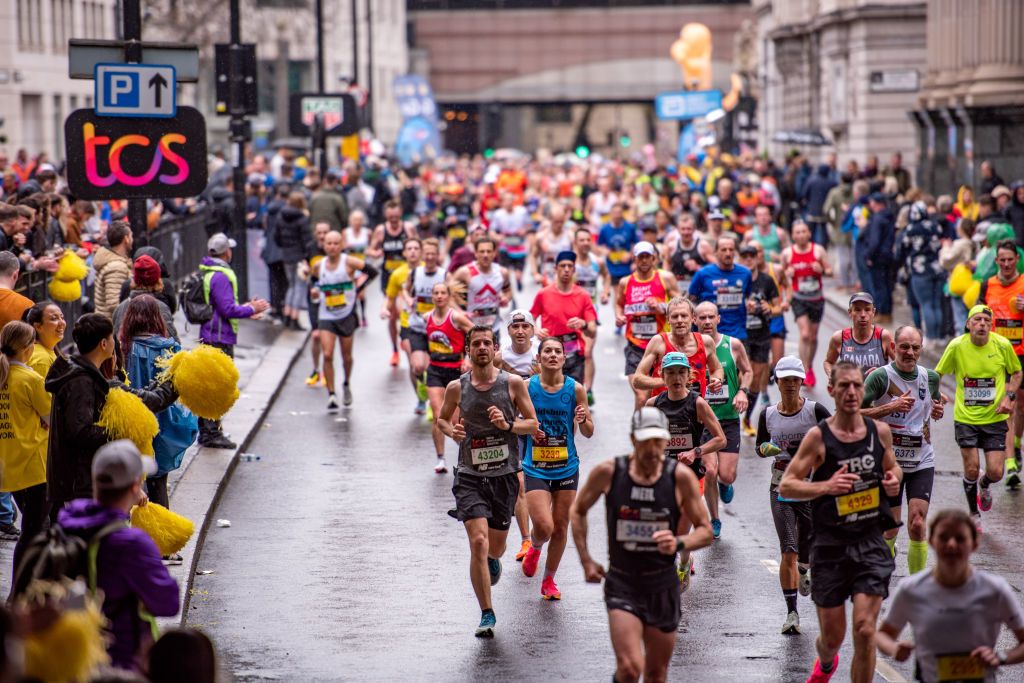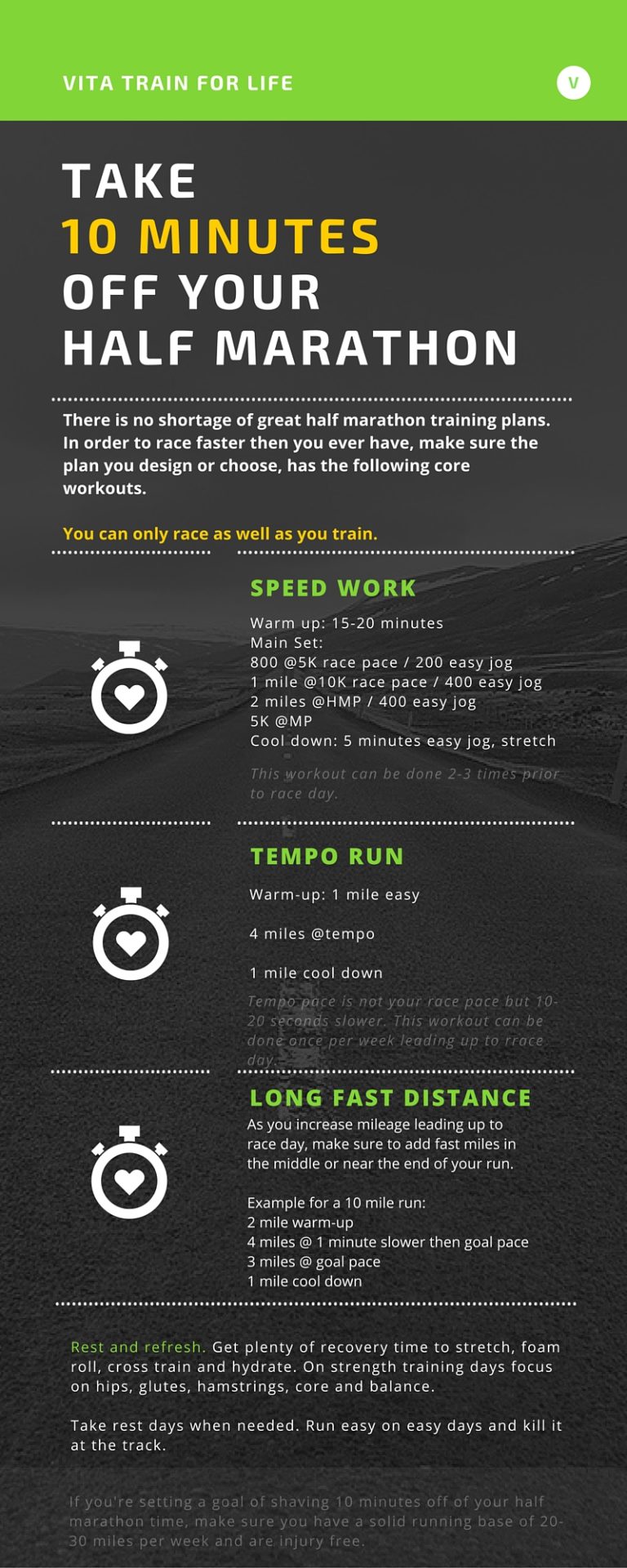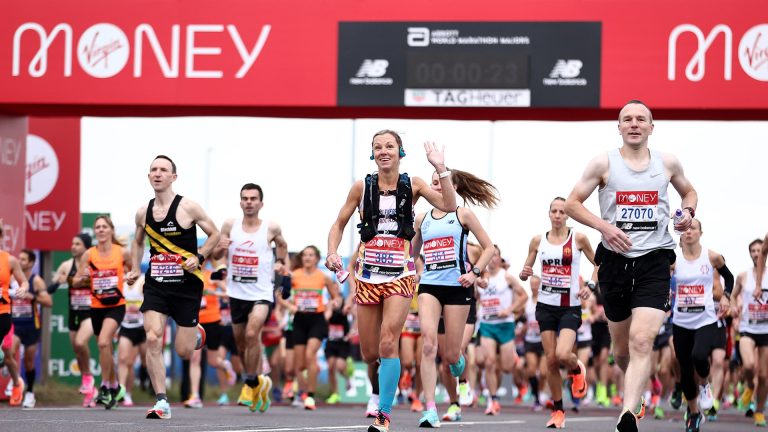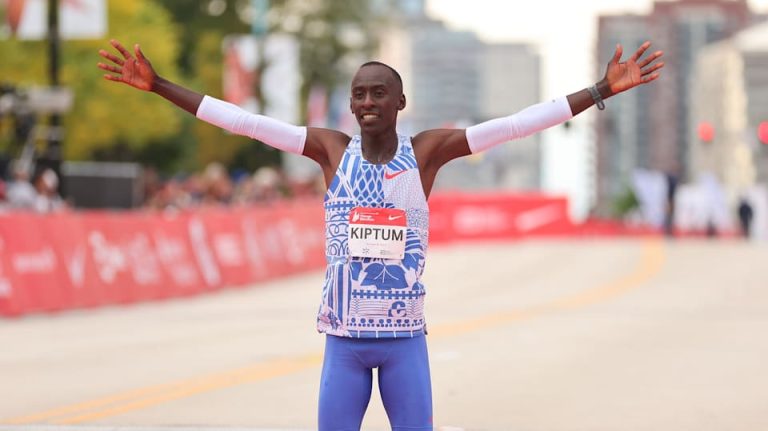How Does Marathon Work
Marathon works by engaging in prolonged physical activity, typically running 26.2 miles in a designated route. Marathon is a long-distance running event that tests the endurance and determination of participants.
Athletes train rigorously for months, both physically and mentally, to prepare for the grueling challenge ahead. The race attracts diverse individuals, from seasoned runners aiming to beat personal records to first-timers simply aiming to cross the finish line. Spectators line the streets, cheering on runners and creating a festive atmosphere, while volunteers ensure the smooth operation of the event.
The marathon’s essence lies in pushing one’s limits, celebrating achievement, and embodying the spirit of perseverance. It is a test of physical strength and mental fortitude that leaves a lasting impact on those who participate.
Marathon Basics
A marathon is a long-distance running race with an official distance of 42.195 kilometers, or 26.2 miles. It is one of the most challenging and prestigious events in the running world. Understanding the basics of a marathon, including its history and significance, can provide valuable insights into this grueling yet fulfilling endeavor.
What Is A Marathon?
A marathon is a foot race that covers a distance of 42.195 kilometers (26.2 miles) and is typically held on public roads. It is a test of endurance, strength, and mental fortitude for participants. Marathons are organized globally, attracting runners of all skill levels who seek personal accomplishment or embrace the spirit of competition.
Brief History Of Marathons
The marathon has its roots in ancient history, inspired by the legendary run of a Greek soldier named Pheidippides. According to the historical account, Pheidippides ran from the battlefield of Marathon to Athens, a distance of approximately 26 miles, to deliver news of a military victory before he collapsed and died. The modern marathon, as an organized race, was established in the late 19th century and has since evolved into a symbol of human endurance and determination.

Credit: bootcamp.uxdesign.cc
Training For A Marathon
Preparation is key when embarking on the journey of training for a marathon. Setting goals, creating a training plan, and incorporating cross-training are crucial components for success.
Setting Goals
Define your objectives clearly to keep your focus sharp throughout your training program.
Creating A Training Plan
Outline a structured schedule that includes gradual mileage increases and rest days.
Importance Of Cross-training
- Diversify your workouts to prevent injury and improve overall fitness.
- Incorporate activities like swimming or cycling to enhance strength and endurance.
Nutrition For Marathon Runners
Marathon runners rely on proper nutrition to fuel their bodies and optimize performance. Understanding how marathons work and the role of nutrition is essential for runners to meet their goals and reach the finish line strong.
Fueling During Training
Eat balanced meals with carbohydrates, protein, and healthy fats to sustain energy.
Carbohydrates are essential for fueling long runs and should make up a significant portion of your diet.
Pre-race Meal Planning
Consume a carb-rich meal the night before the race for optimal energy levels.
Include easy-to-digest foods like pasta, rice, or potatoes to avoid digestive issues on race day.
Hydration Strategies
Drink enough water throughout the day leading up to the race to stay hydrated.
Consider electrolyte drinks to replenish lost minerals during long runs and prevent cramping.

Credit: www.boston.com
Race Day Preparation
Race day preparation is key to ensuring a successful marathon experience. Proper mental preparation, outfit selection, and a warm-up routine all play crucial roles in helping runners perform at their best on the big day.
Mental Preparation
Having a strong, positive mindset is essential for any marathon runner. Visualizing success, staying focused, and maintaining confidence are vital aspects of mental preparation. Techniques such as mindfulness meditation and positive affirmations can help alleviate race day jitters and boost mental resilience.
What To Wear On Race Day
Choosing the right attire is crucial for comfort and performance. Breathable, moisture-wicking fabric is essential to keep the body dry and comfortable, reducing the risk of chafing. Properly fitted running shoes, along with lightweight, weather-appropriate clothing, are also important considerations. Avoid cotton materials that may retain moisture and lead to discomfort.
Pre-race Warm-up Routine
A carefully planned warm-up routine can help prevent injury and enhance performance. Dynamic stretching exercises such as leg swings and arm circles can help loosen muscles and improve flexibility. Light jogging and short sprints can also prime the body for the physical demands ahead.
Race Day Strategies
On race day, having a solid plan in place can make all the difference between a successful marathon experience and one filled with disappointment. In this section, we will explore some race day strategies, including pacing techniques, dealing with race day obstacles, and post-race recovery tips. Use these strategies to optimize your marathon performance and ensure you cross the finish line with pride.
Pacing Techniques
Pacing is a critical aspect of marathon running. Going out too fast can lead to early fatigue, while starting too slow may hinder your overall performance. Here are some key pacing techniques to help you maintain a steady rhythm throughout the race:
- Negative Split: Aim to run the second half of the marathon faster than the first half. This strategy conserves energy and helps you finish strong.
- Effort-Based Pacing: Instead of fixating on a specific pace, focus on running at a perceived effort level. This allows you to adapt to the course conditions and adjust your speed accordingly.
- Maintain Consistency: Avoid drastic pace variations. Aim for a constant, sustainable running speed throughout the race.
Dealing With Race Day Obstacles
While every marathon presents its unique challenges, being prepared to tackle obstacles head-on will help you stay mentally and physically strong. Here are some common obstacles marathon runners often face and how to overcome them:
- Cramping: Stay well-hydrated and fuel properly throughout the race. Consider incorporating electrolyte-rich drinks or gels to ward off muscle cramps.
- Chafing: Prevent chafing by applying lubricants such as petroleum jelly to vulnerable areas of your body before the race.
- Mental Fatigue: Stay focused and motivated by breaking the race down into smaller segments, setting micro-goals, and using positive affirmations.
Post-race Recovery
After crossing the finish line, your body will need time to recover from the physical strain of the marathon. Proper post-race recovery is crucial for minimizing soreness, preventing injuries, and restoring your energy levels. Here are some essential post-race recovery tips:
- Hydrate and Refuel: Replace lost fluids and replenish your glycogen stores by consuming water, electrolyte drinks, and nutritious foods within 30 minutes of finishing.
- Gentle Cool-Down: Walk or jog lightly for a few minutes to gradually bring your heart rate down and facilitate the removal of waste products from your muscles.
- Stretching and Foam Rolling: Engage in gentle stretches and foam rolling exercises to improve flexibility, reduce muscle tension, and promote quicker recovery.

Credit: www.runnersworld.com
Frequently Asked Questions For How Does Marathon Work
How Does Marathon Work And Why Is It Popular?
Marathons are long-distance races that test an individual’s endurance. They are popular due to the challenge they offer, the sense of accomplishment, and the opportunity to raise awareness for various causes.
What Is The Typical Distance Of A Marathon?
The standard distance of a marathon is 42. 195 kilometers or 26. 2 miles. This distance was established during the 1908 London Olympics and has been followed ever since.
How Do You Prepare For Running A Marathon?
To prepare for a marathon, you need to follow a training plan that includes gradually increasing your mileage, incorporating strength training, cross-training, and rest days. Proper nutrition and hydration are also essential for a successful marathon.
Conclusion
Marathon is an innovative and effective tool for managing and analyzing data. With its user-friendly interface and powerful features, Marathon simplifies the data handling process for businesses and individuals alike. Its seamless integration with various platforms makes it a valuable asset for optimizing productivity and performance.
Embrace Marathon and unlock your data potential today!






